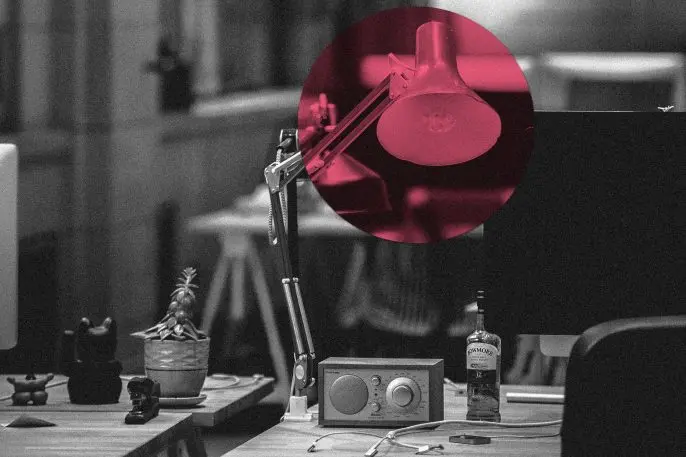We can all agree: Open plan offices are the scourge of 21st-century office life. As anyone who’s worked in one knows, open plans are noisy and distracting as hell, and recent studies have even proven that they decrease personal interactions (and increase emails), sap productivity levels, and even promote sexism in subtle, overlooked ways. Yet, unsurprisingly, the open plan is an undeniably cost and space-efficient way for companies to cram more desks and workers into limited spaces and meet the bottom line–which means they’re not likely to go away anytime soon.
Absence, as they say, makes the heart grow fonder. So while you dream about returning to the cubicle you once scorned, the internet has delivered some hilarious, questionably effective DIY hacks to surviving an open plan office in the meantime. The open plan office isn’t an overblown hot topic in the media, it’s something that thousands of real people endure on the regular, across industries.
Case in point: A Redditor recently asked the online community for suggestions on how to endure their open plan office. On the fire thread that resulted, Redditors amassed hundreds of suggestions for surviving another day in the bullpen. It’s a telling glimpse at how real people are reckoning with this flawed design paradigm–ranging from simple hacks to jokey behavior we wouldn’t necessarily condone.
Buy a “busy light” or rearview mirror
Many commenters endorsed using a variant of a color-coded “busy light” to indicate when you’re head down, focused on a task, or in a meeting.
Wearing Bluetooth noise-canceling headphones is another sensible and popular suggestion, though sustained wear could cause irreparable hearing damage over time; the white noise of a retro mechanical keyboard, for some, was preferred. Other commenters lamented the dilemma of not being able to see who’s approaching from behind. One common solution? A mirror stuck to your monitor.

Build your own wall, or “stop showering”
But for lots of people, blocking out the sound of loud coworkers isn’t enough. Annoying the hell out of them, apparently, doubles as a top line of offense. “Stop showering. People will keep their distance,” one user jokes, while others suggest cramming your station with obnoxious decorations and tchotchkes, or loading up on beans and stinky-breath foods.
Those diversionary tactics might keep meddlesome coworkers or micromanaging supervisors at bay (at the potential cost of your own hygiene), but they weren’t passive-aggressive enough for other commenters, who suggest decking out your workstation with signage, a numbered-ticket dispenser, and barriers made of clear tape. One commenter recounted a colleague who erected a giant cardboard door over their desk–but a pet gate or doggie door, others opined, would have been a better bet.
Ultimately, some people change jobs entirely
Decamping to a call booth or conference room is another common strategy, though its viability is short-lived–you can’t be that guy forever. At the end of the day, many commenters cited an open plan office as a dealbreaker for quitting or even accepting a new job offer.
Not that we needed the internet to tell us this, but open plan offices are clearly a poor product of design that could stand to be disrupted and reinvented–yet again. Until then, opt for that WFH perk and keep your sanity.
Recognize your brand’s excellence by applying to this year’s Brands That Matter Awards before the early-rate deadline, May 3.
